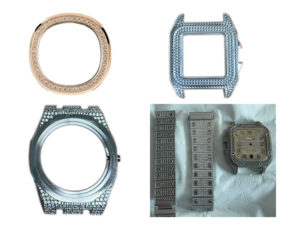Both mechanical watch movements and automatic watch movements are types of mechanical movements, but there are some key differences in their power source and how they work. Here are the main differences between the two:
1. Power source
Mechanical watch movement:
Relies on manual winding, tightening the mainspring by rotating the crown to power the watch.
Users need to manually wind the watch regularly, usually every day or every few days.
Automatic watch movement:
Also a mechanical movement, but with automatic winding function.
The rotor is driven by the movement of the wearer’s wrist, automatically winding, reducing the frequency of manual winding.

2. Winding method
Mechanical watch movement:
Relies only on manual winding, and the user must actively operate it.
Automatic watch movement:
Combines automatic and manual winding methods, and the wearer’s daily activities will automatically wind it.
You can also replenish energy by manually winding it.
3. Ease of use
Mechanical watch movement:
The user needs to remember to wind it regularly, otherwise it may cause the watch to stop.
Automatic watch movement:
More convenient, the wearer does not need to pay too much attention to winding in daily activities, suitable for daily wear.
4. Energy storage
Mechanical watch movement:
Usually the energy storage time is short, depending on the design of the spring, it may be around 48 hours.
Automatic watch movement:
The energy storage time is usually longer, because it has an automatic winding function and can be continuously charged while wearing.
5. Structural complexity
Mechanical watch movement:
The structure is relatively simple, mainly composed of springs, gears and balance wheels.
Automatic watch movement:
The structure is more complex, in addition to the manual winding mechanism, it also includes the rotor and related mechanisms for automatic winding.

Summary
Both mechanical watch movements and automatic watch movements are the core of mechanical watches, but the automatic watch movement achieves a more convenient winding method through the wearer’s movement, while the mechanical watch movement relies entirely on manual operation. According to personal usage habits and preferences, you can choose the type of movement that suits you.





